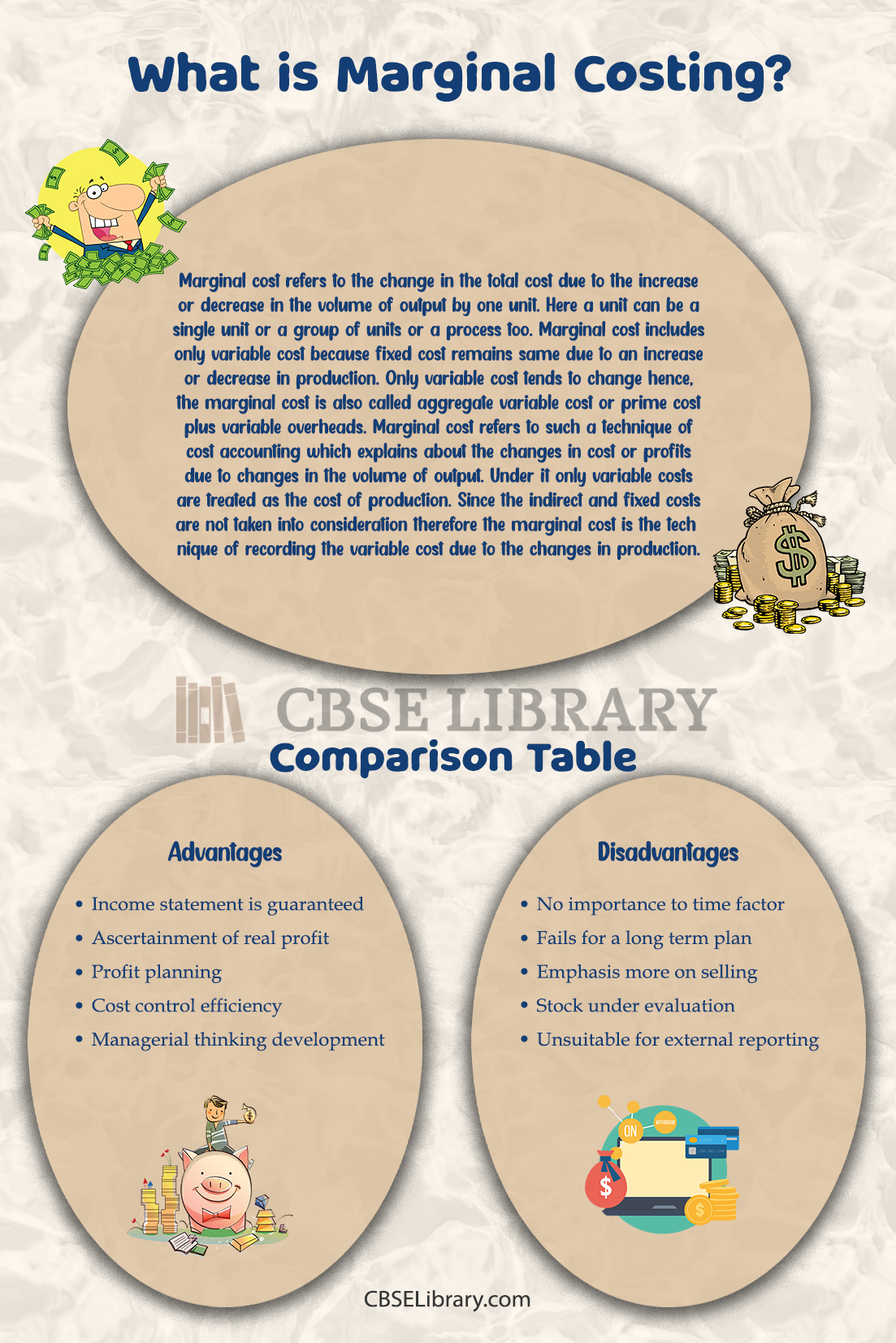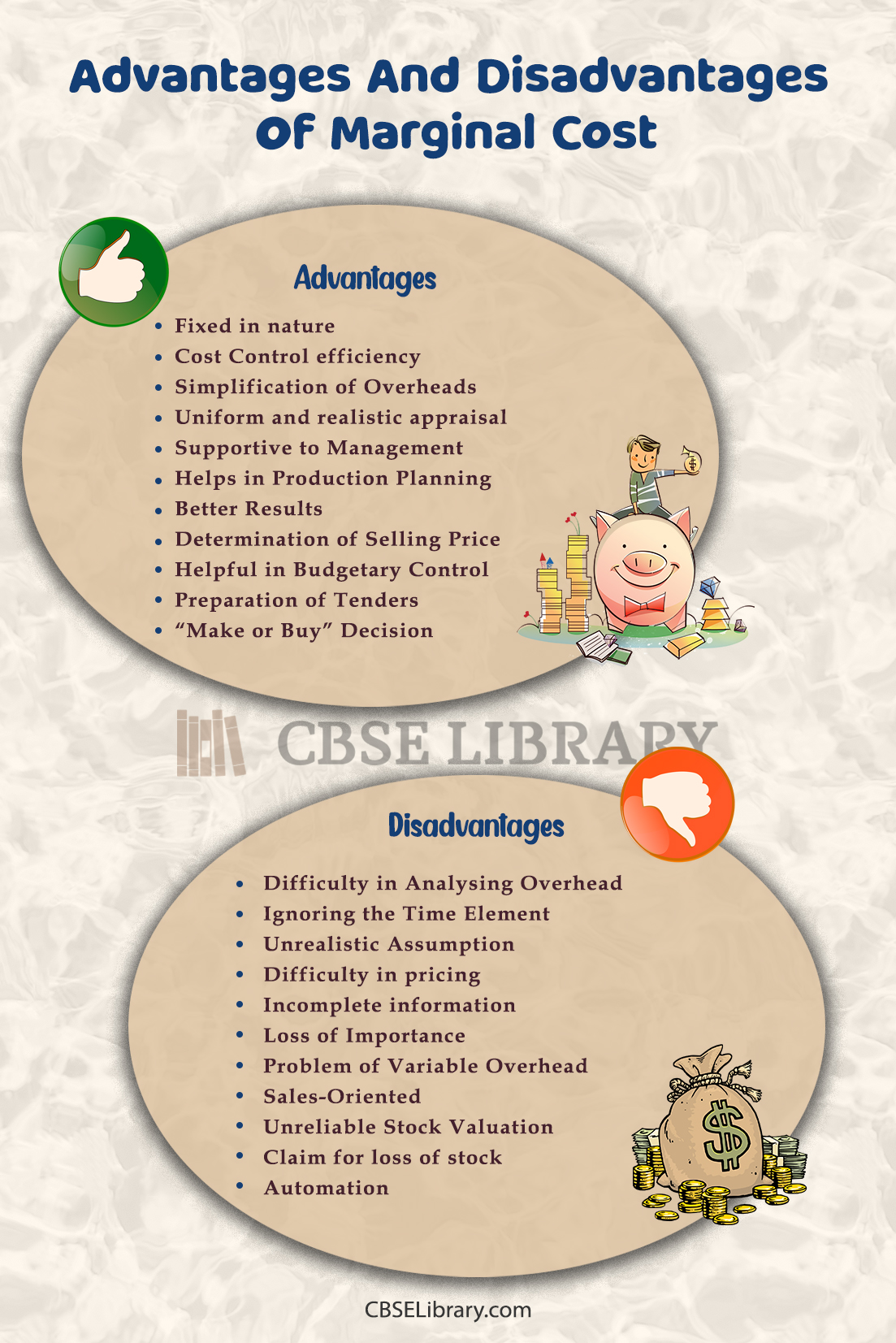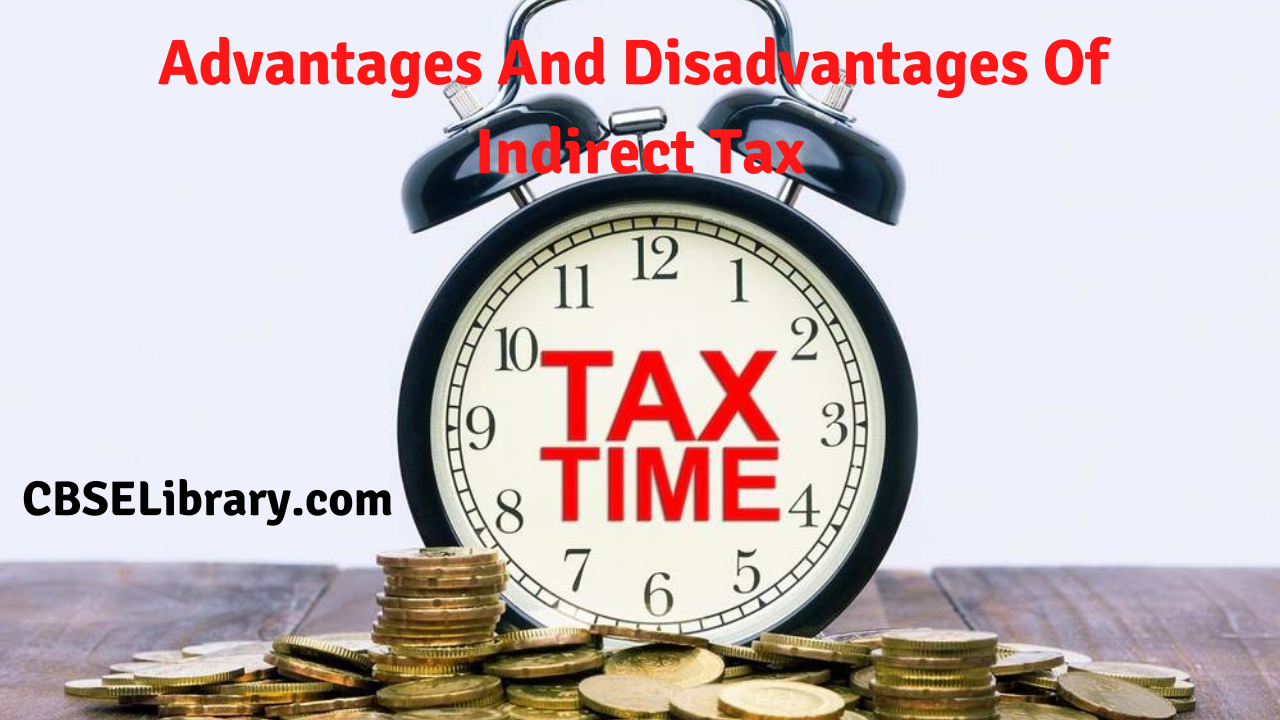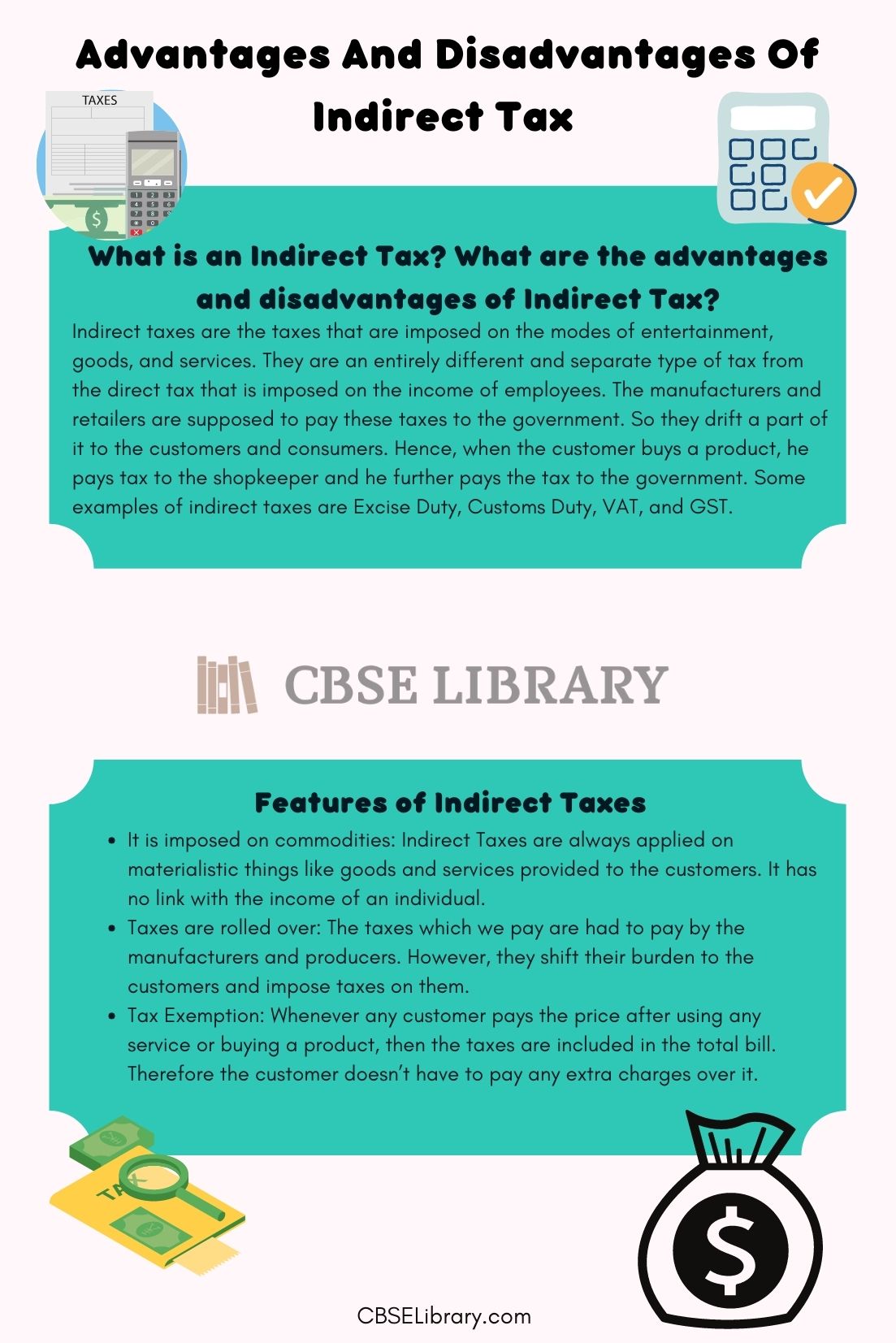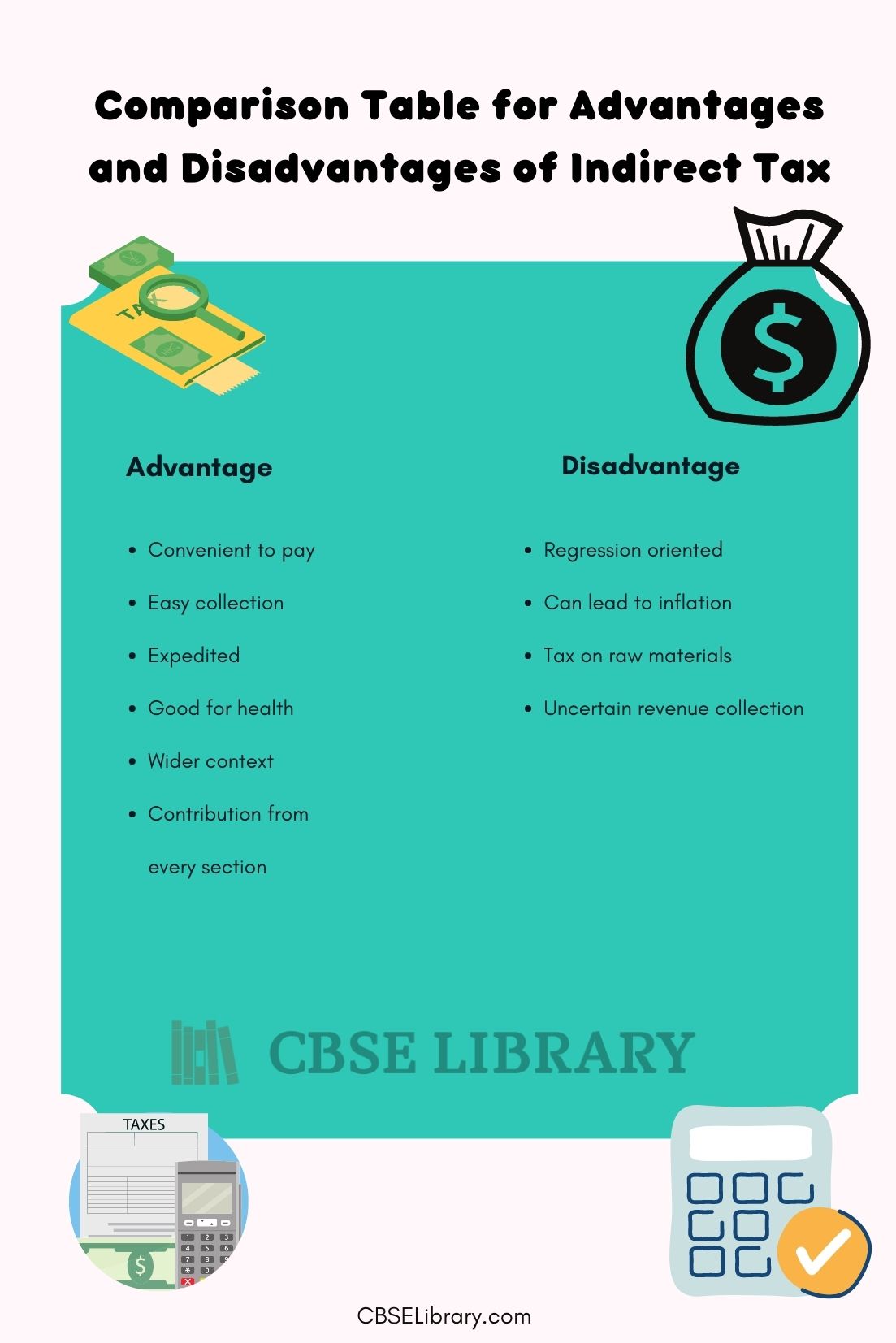Advantages And Disadvantages Of Sustainable Development: Natural resources include everything found in the environment and are considered one of the most essential sources of raw materials for man’s advancement and consumption in society. Environmental degradation and ecosystem loss have been recorded as a result of overexploitation of these resources. As a result, policies and laws are developed to safeguard it; sustainable development is one of the terms used in this scenario.
It’s a term that refers to the ability to meet society’s expectations for natural resource use by implementing a set of processes for their efficient management. With the purpose of preserving man’s and nature’s ecological equilibrium.
Sustainable development is the result of excessive exploitation of natural resources without a commitment to their availability for future generations. Lack of control over resource acquisition, damaging human practices, and polluting processes are all blamed for this. In addition to not adhering to the required regeneration timelines for the environment, such as soil, plant species, and water, to mention a few.
Students can also find more Advantages and Disadvantages articles on events, persons, sports, technology, and many more.
What is Sustainable Development? Advantages and Disadvantages of Sustainable Development
A collection of policies adopted by governments in order to protect natural resources and ensure their acquisition in the future is known as sustainable development.
The Brundtland Report, published in 1987 and warning of the negative environmental consequences of economic growth and globalisation while also attempting to find solutions to the problems caused by industrialization and population growth, was the first to introduce the concept of sustainable development.
Many of humanity’s issues, such as climate change, water scarcity, inequality, and hunger, can only be addressed globally and via the promotion of sustainable development, which includes a commitment to social progress, environmental balance, and economic prosperity.
As part of a new sustainable development framework, the United Nations approved the 2030 Agenda, which contains the Sustainable Development Goals, a call to action to protect the planet and secure people’s worldwide well-being. To attain these common aims, individuals, organisations, governments, and countries from all around the world must collaborate.
- Advantages of Sustainable Development
- Disadvantages of Sustainable Development
- Comparison Table for Advantages And Disadvantages Of Sustainable Development
- FAQ’s on Advantages And Disadvantages Of Sustainable Development
What are17 Sustainable Goals?
The Sustainable Development Goals, also known as the Global Goals, are a call to all governments throughout the world to address the enormous challenges that humanity faces and to ensure that everyone has an equal chance to live a better life without jeopardising the health of our planet.
17 Goals for a better world are:
- Get rid of poverty.
- Get rid of hunger.
- Ensuring a long and healthy life
- Ascertain that everyone has access to basic services such as water, sanitation, and renewable electricity.
- Encourage the creation of development opportunities through inclusive education and decent work.
- Encourage infrastructure innovation and resiliency, resulting in communities and cities that can create and consume sustainably.
- Reduce global inequality and notable disparities between men and women.
- Fighting climate change and preserving ocean and land ecosystems are all examples of environmental protection.
- Fighting climate change and preserving ocean and land ecosystems are all examples of environmental protection.
- To promote peace and long-term development, encourage collaboration among various social actors.
Advantages of Sustainable Development
Energy-saving: Because of the sort of site where its infrastructure is placed, they are built to capture the most amount of sunlight possible, favouring ventilation in all of its corners.
Health Care: Some sustainable homes contain green areas, spas, and even a gym, promoting each individual’s health through daily exercise.
Environmentally friendly: The basic pillar on which all of this is built, and where ideas for developing the economy without jeopardising the environment take shape. It immediately affects the search for alternate, clean, and equally effective types of energy because it includes minimising the emissions of gases that produce phenomena such as acid rain or global warming.
Similarly, because human activities are responsible for a large portion of environmental degradation, adopting this ideology entails taking steps to reduce pollution, which can result in positive outcomes such as improved air quality, more green areas, the preservation of the planet’s biodiversity, the survival of more species, and so on.
Water conservation: Water-saving valves are installed in the sustainable apartments, as well as a rainwater collection system and grey water treatment, which is used for irrigation and bathroom drainage.
Disadvantages of Sustainable Development
Costs: Implementing them is costly because it entails replacing an existing energy source that already serves a portion of the population with a new one, upgrading infrastructure, and changing consumption habits, all of which can be highly costly.
Unemployment in some areas: Changes to conserve and care for ecosystems and biodiversity can force various industries to decrease their activities or, in the worst-case scenario, cease operations entirely. Many people who have spent their entire life working in a single sector, such as the coal industry, may face unemployment as a result of this.
More requirements: Companies, plants, factories, and others that have an impact on the environment would be held to higher standards, such as lowering carbon dioxide emissions and properly disposing of garbage.
Fragile commitment: Because the transition to a more environmentally friendly industry is more expensive and harder to achieve due to the factors discussed above, there is a risk that the promise made to society will be less serious.
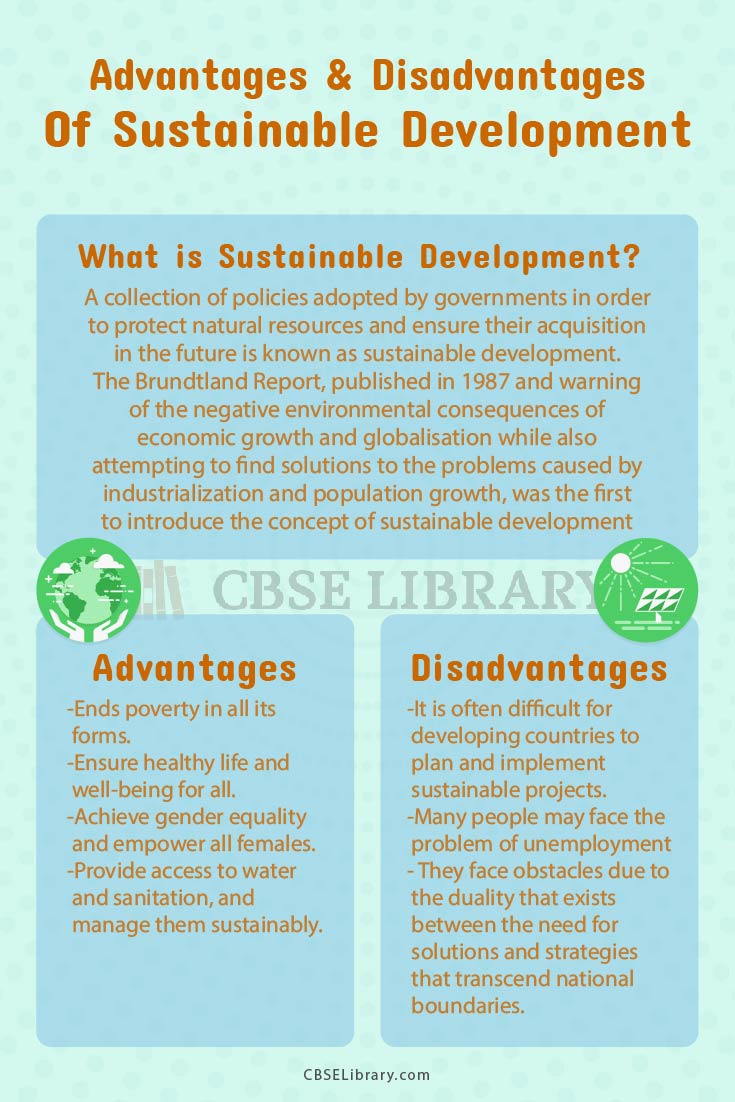
Comparison Table for Advantages And Disadvantages Of Sustainable Development
| Advantages | Disadvantages |
| Ends poverty in all its forms | It is often difficult for developing countries to plan and implement sustainable projects due to a lack of financial resources. |
| Ensure healthy life and well-being for all | Many people may face the problem of unemployment |
| Achieve gender equality and empower all females | Sustainability policies face obstacles due to the duality that exists between the need for solutions and strategies that transcend national boundaries. |
| Provide access to water and sanitation, and manage them sustainably | It is a costlier process |
FAQs on Advantages And Disadvantages Of Sustainable Development
Question 1.
How is Sustainability different from Sustainable Development?
Answer:
The notion of sustainability is often associated with a long-term end (a more sustainable world), while sustainable development refers to a series of processes and strategies to attain it (contexts such as sustainable agriculture and forestry, sustainable production and consumption, smart government, education and training, etc.).
Question 2.
What are the main components of sustainable development?
Answer:
Sustainable development consists of three aspects: economic growth, social inclusion, and environmental protection. It is essential to balance these factors; sustainable development requires economic growth, achieving sustainable livelihoods, living in harmony with nature, and employing appropriate technology.
Question 3.
What are the sustainable development Goals of India?
Answer:
According to the Sustainable Development Goals, the most pressing issues are poverty, hunger, education, health and well-being, education, women’s empowerment, water and sanitation, energy, infrastructure, industry, and innovation as well as reducing inequalities.
Question 4.
The SDGs have been signed by how many countries?
Answer:
On the first day of the summit on sustainable development, the 193 Member States of the United Nations adopted a bold new global agenda for ending poverty by 2030 and pursuing a sustainable future.






